Bitcoin Ordinals & BRC-20 Token Guide – Comparison with ERC20 / NFTs
Bitcoin Ordinals – A protocol that brought Non-Fungible Tokens (NFTs) to the Bitcoin blockchain. Ordinal Inscriptions allowed users to “mint” NFTs on the Bitcoin blockchain for the first time by inscribing data on a satoshi. Now with BRC-20 token standard which is a new implementation of Ordinals protocol we also have fungible tokens on the Bitcoin network.
A Bitcoin based token standard that has became the latest trend in this space. Believe it or not; we now have Meme coins and tokens on Bitcoin blockchain. To date more than 25000 tokens have been minted using the Bitcoin’s new BRC20 standard; out of which majority of the tokens are meme coins. Users can now store all these different assets in their Bitcoin wallet.
Well you’re aware of ERC20 tokens and NFTs on the Ethereum Network. But what are BRC20 tokens and Ordinal Inscriptions which is also called as Bitcoin NFTs? Here this guide is all about Bitcoin Ordinals and BRC-20 Tokens. We’ll explore their functionality and, impact. Also we’ll discuss how they compare with the well-known ERC-20 tokens and NFTs on the Ethereum network.
Ordinal Inscriptions & BRC-20 Tokens
In the recent times the Bitcoin blockchain has witnessed a significant evolution with the introduction of non-fungible tokens (NFTs) and the emergence of the BRC-20 token standard. While NFTs made their debut on the Bitcoin blockchain through the Ordinals protocol, BRC-20 tokens have sparked a new wave of experimentation in the realm of fungible tokens. The growing interest in BRC20 tokens has been astonishing, with thousands of different tokens minted using this standard.
The rise of BRC-20 tokens has propelled Bitcoin into a new era of tokenization, with transaction volumes and market capitalization experiencing remarkable surges. To put it in perspective the transaction volume of BRC 20 tokens have surpassed the normal BTC transactions causing congestion on the Bitcoin network. This has even forced Binance – A largest centralized crypto exchange, to temporarily halt BTC withdrawals. But on the plus side the surge in token activity has generated more income for miners from just the transaction fees alone.
For example take a look at the chart below which shows the percentage breakdown of BTC transaction by transaction type.
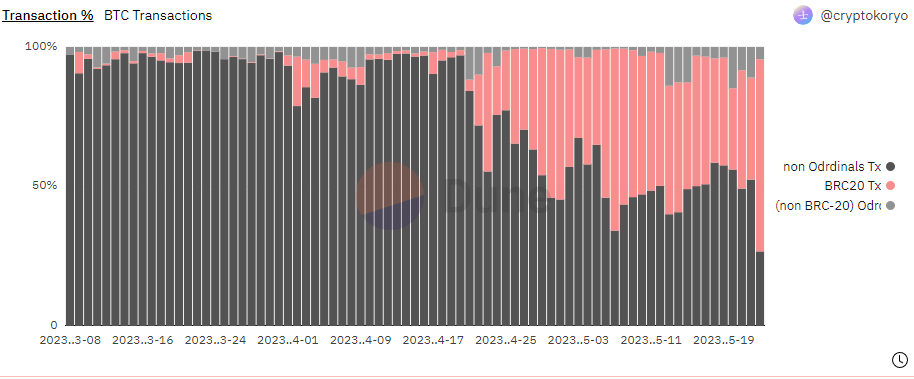
The dark gray at the bottom represents standard Bitcoin transactions (eg: transfer of BTC from one address to another). The middle pink portion represents BRC-20 transactions (eg: BRC-20 token mints & transfers), and the light gray at the top is Bitcoin Ordinal transactions (eg: Minting & Transfer of Ordinal NFTs).
Source: https://dune.com/cryptokoryo/brc20. On this same page you’ll also find graph for BTC transaction fees.
See the spike in BRC-20 transaction volume? As of May 2023 BRC-20 transaction accounts for more than 60% of all Bitcoin transactions on the network.
To track the growth and adoption of BRC-20 Tokens you can follow these three websites: https://brc-20.io/, https://ordiscan.com/ and https://dune.com/cryptokoryo/brc20.
Okay, now before we explore BRC20 tokens, let’s first take a moment to understand the concept of Ordinals and their relation to Bitcoin NFTs, also known as Ordinal Inscriptions.
What are Bitcoin Ordinals?
Bitcoin Ordinals, also known as “inscriptions,” are a unique form of NFTs that exist on the Bitcoin blockchain. Ordinals theory was developed by Casey Rodarmor (@rodarmor) in January 2023. The Ordinals protocol assigns each satoshi, the smallest unit of Bitcoin (1 BTC = 100000000 Satoshi), a sequential number based on the order of mining. This sequential numbering allows for the inscription of data, such as images, text, audio or videos, onto individual satoshis.
The aim of Ordinal theory is to provide each satoshi with a distinct identity. The number that uniquely identifies a sat is known as the ordinal number. It makes each inscriptions non-fungible and enabling them to be tracked, transferred, and imbued with individual meanings.
Unlike traditional Non Fungible Tokens (NFTs) on Ethereum and other blockchains, Bitcoin Ordinals focus on creating an immutable on-chain presence for digital art, writing, or videos. Hence the developer Rodarmor prefers the term “inscriptions” rather than “NFTs” to describe the unique nature of Bitcoin Ordinals.
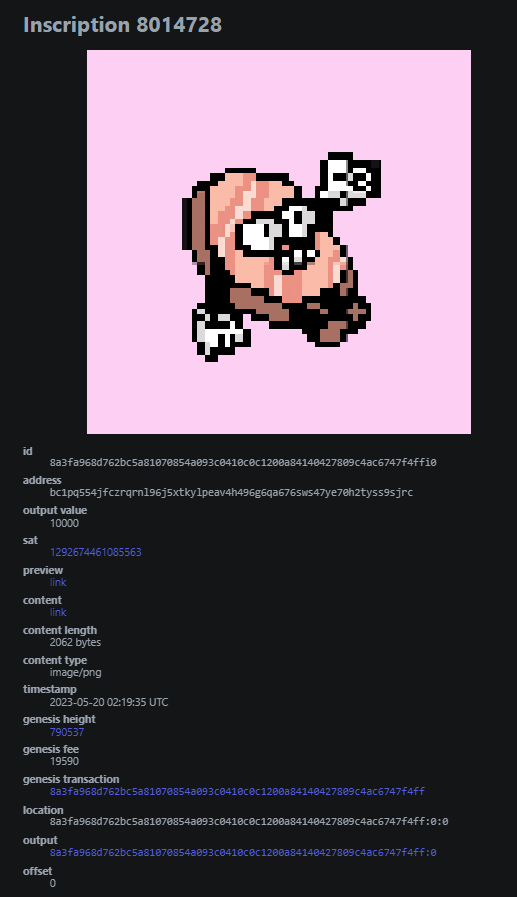
By leveraging the Ordinals protocol, users can create their own digital assets and inscribe them onto a satoshi. Once inscribed, these non fungible digital assets can be traded or exchanged on the peer-to-peer Bitcoin network, just like any other token. This introduces the concept of non-fungible tokens to the Bitcoin ecosystem, opening up new possibilities for artists and creators.
The introduction of the Bitcoin Ordinals protocol marks a significant milestone in the history of Bitcoin. By allowing users to create NFTs on the Bitcoin blockchain by inscribing data directly onto satoshis, it provides a novel and groundbreaking approach to the world of digital collectibles and artistic expression within the Bitcoin network.
To delve deeper into the world of Bitcoin Ordinals and Inscriptions, you can explore the Ordinal Theory Handbook available at https://docs.ordinals.com/.
Okay, now what are BTC-20 Tokens?
BRC-20 Tokens: Bringing Fungible Tokens to Bitcoin
BRC stands for “Bitcoin Request for Comment”. BRC-20 tokens are an experimental fungible token standard on the Bitcoin blockchain created by a on-chain analyst named Domo (@domdata) on March 8th, 2023.
It offers a new way to create and transfer fungible tokens using the Ordinals protocol. Inspired by Ethereum’s ERC-20, BRC-20 allows developers to easily build and interact with fungible tokens within the Bitcoin ecosystem.
Unlike ERC-20, BEP-20 and other similar token standards used on EVM chains, BRC-20 tokens do not rely on smart contracts. Instead, they utilize Ordinals inscriptions of JSON data to deploy token contracts, mint, and transfer tokens. This approach enables the creation of digital assets inscribed on satoshis, granting them individuality and unique characteristics.
Although BRC-20 tokens are still in an experimental phase, their potential use cases are intriguing. They provide a means to establish fungible tokens on the Bitcoin blockchain, overcoming the historical challenges associated with smart contract functionality. As a result, a growing number of BRC-20 tokens have been minted, offering a diverse range of possibilities for tokenized assets.
It’s worth noting that while BRC-20 tokens bring exciting advancements to the Bitcoin ecosystem, caution is advised. Just because they are Bitcoin based tokens doesn’t mean they are safe and secure. As with any investment, thorough research and understanding of the associated risks are essential. While BRC-20 is an emerging standard, it is important to exercise discretion and not blindly follow the hype.
To learn more about the BRC-20 token standard and explore integrations, you can visit the BRC-20 Integrations tracking page at: https://mythbtc.xyz/brc-20-integrations/. It shows which applications have integrated the BRC-20 standard. Additionally, for in-depth information on the BRC-20 token standard, you can refer to the BRC-20 Experiment guide available at https://domo-2.gitbook.io/brc-20-experiment/.
Bitcoin Ordinals NFT and BRC-20 Token: Summary
While Ordinal protocols are associated with Non-Fungible Tokens (NFTs), BRC-20 introduced the idea of fungible tokens on the Bitcoin blockchain.
in January 2023 with the launch of Ordinals protocol, non-fungible tokens (NFTs) made their debut on Bitcoin blockchain. Using Ordinals protocol users can issue digital assets such as audio, images and videos. They can also transfer ownership of such assets. All these assets come with own unique verifiable characteristics and hence they are not interchangeable on a 1:1 basis.
This technology behind Ordinals theory is also what brought fungible tokens on the Bitcoin blockchain. Ordinals allowed developers to inscribe text on Bitcoin blockchain. Now with BRC20 this inscribed text is used to represent a fungible token. These issued fungible tokens are all interchangeable on a 1:1 basis and can be / transferred / traded like any other asset on the Bitcoin blockchain.
Okay, its time we explore the BRC-20 tokens. Let’s understand how they work? And how BRC 20 compares with ERC 20 in every aspect and their potential implications on the Bitcoin ecosystem.
Inscriptions
First here is how Ordinal Inscriptions look like.
Go to https://ordinals.com/ to explore the latest inscriptions. You can view all the inscriptions at: https://ordinals.com/inscriptions
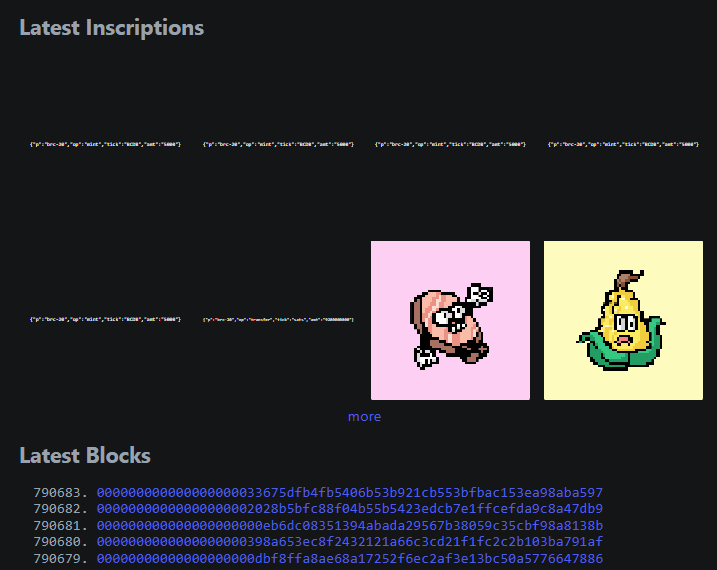

As you can see some are image inscriptions, some are text inscriptions and some are BRC-20 token inscriptions. Let’s understand what a BRC-20 token inscription looks like.
BRC-20 Token Example
A BRC-20 token inscription looks something like this:
{"p":"brc-20","op":"mint","tick":"sats","amt":"100000000"}
What does it mean? “p” stand for protocol and that is brc-20. “op” stands for operation which can be deploy, mint or transfer. In this case the operation is mint. “tick” represents ticker of the token which is “sats” and “amt” shows the number of token that has been minted.
Currently there are a total of 24,677 BRC-20 tokens with a total market cap of $468,106,917.
$ORDI is the first BRC-20 token to be deployed and is currently the number 1 BRC-20 token having a market cap of ~$250M as of 22 May 2023.
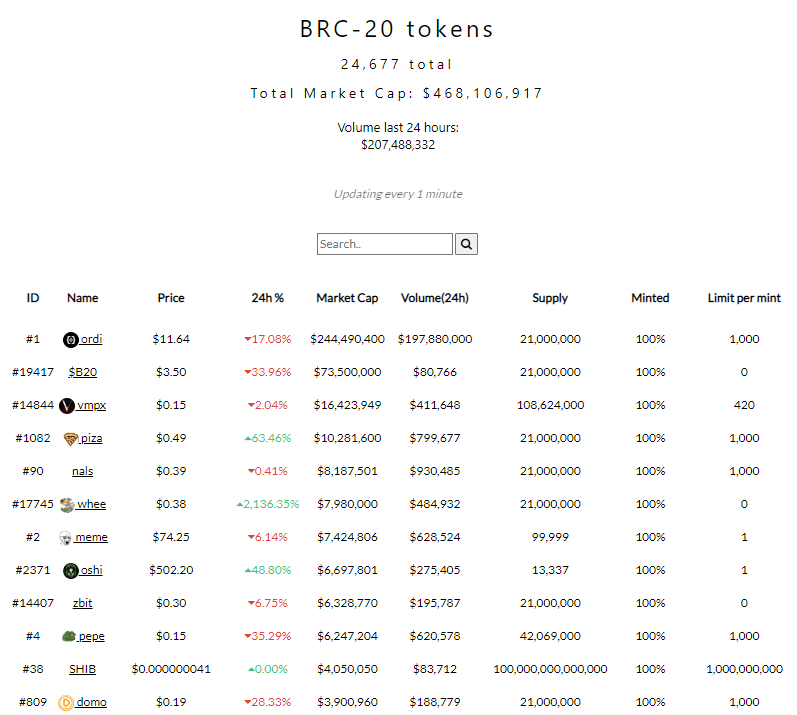
You can track the on-chain details of all BRC-20 tokes at BRC-20 Market cap scanner: https://brc-20.io/. This is similar to CoinMarketCap which shows market cap data for all BRC20 tokens.
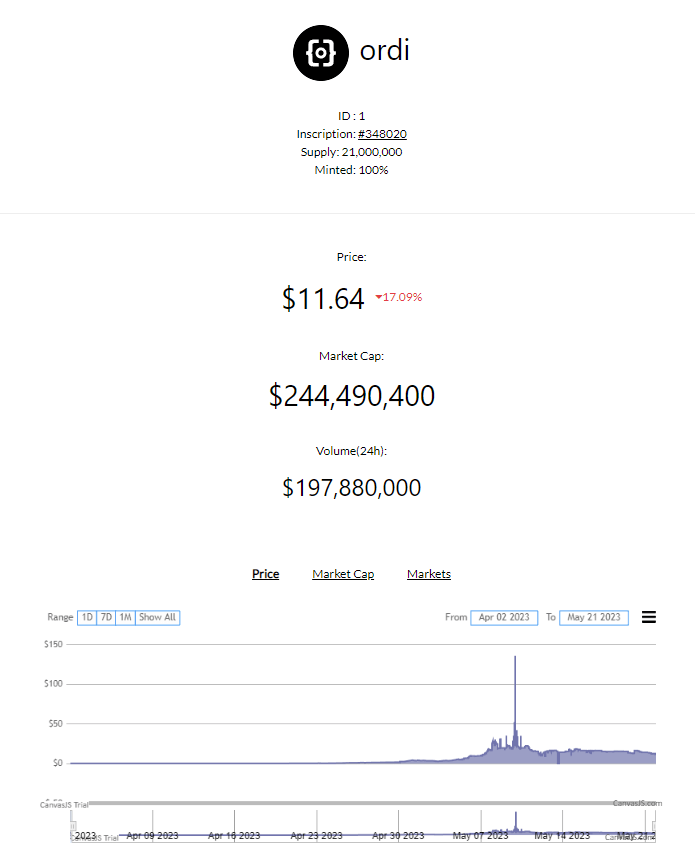
To know more about the particular inscription you can use https://ordiscan.com/ which is an explorer similar to Etherscan but for Bitcoin ordinals and BRC-20 tokens.
$ORDI
For example let’s take a look at “ORDI” BRC-20 token.

The BRC-20 action is “Deploy”.
The inscription number is Inscription #348,020.
Its Inscription ID is: b61b0172d95e266c18aea0c624db987e971a5d6d4ebc2aaed85da4642d635735i0 and is deployed by the owner of this Bitcoin address: bc1pxaneaf3w4d27hl2y93fuft2xk6m4u3wc4rafevc6slgd7f5tq2dqyfgy06.
The inscription page also shows the inscription date, the sat number, limit per mint and the mint status.
Click on view raw data which will show the transaction text for the ORDI token and this is how a BRC-20 inscription looks like.
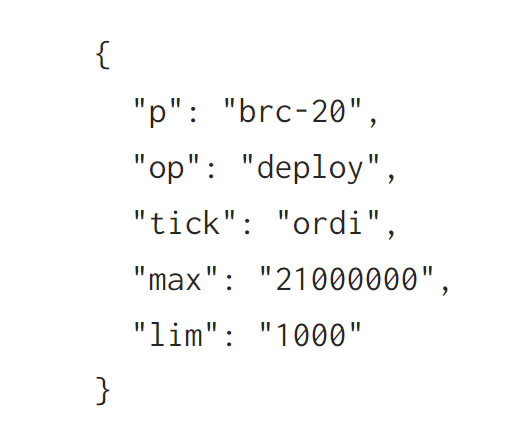
As you can see it shows the text included in the transaction to inscribe the “ordi” BRC-20 token.
{
"p": "brc-20",
"op": "deploy",
"tick": "ordi",
"max": "21000000",
"lim": "1000"
}
- “p”: represents protocol where in this example the token is issued under the BRC-20 token standard.
- “op”: stands for operation requested in this transaction which is set to “deploy”.
- “tick”: stands for ticker of the token and here the ticker name is “ordi”.
- “max”: means maximum supply of tokens which is 21,000,000 ORDI.
- “lim”: represents the maximum amount of token that can be minted in one transaction.
$ORDI has a total supply cap of 21 million tokens with a limit of 1,000 tokens per mint.
As you can see the mint status is 100% which means all the tokens have been minted and now if you wish to acquire $ORDI you can only buy it from the marketplace.
Now before we explore marketplace and take a look at the tools which you can use to interact with these tokens here is quick comparison between BRC20 vs ERC20,
BRC-20 Tokens vs. ERC-20 Tokens
The creator of BRC-20 drew inspiration from the ERC-20 token standard on the Ethereum network when developing the BRC20 standard for the Bitcoin blockchain.
Ethereum’s ERC-20 stands for “Ethereum Request for Comment 20” which is the standard implementation for creation of fungible tokens on the Ethereum blockchain.
Similarly Bitcoin’s BRC-20 stands for “Bitcoin Request for Comment 20” which is the newly implemented standard for fungible tokens created using the Bitcoin blockchain.
While the Bitcoin based BRC-20 sounds a lot like ERC-20 there are significant differences between them.
BRC20 vs ERC20
| BRC-20 | ERC-20 |
|---|---|
| BRC-20 tokens are issued on the Bitcoin blockchain. | ERC-20 tokens are issued on the Ethereum blockchain. |
| Tokens on Bitcoin network are secured by decentralized proof-of-work consensus mechanism. | Tokens on Ethereum network are secured by Ethereum’s proof-of-stake consensus protocol. |
| BRC-20 rely on ordinal inscriptions to operate. | ERC-20 rely on smart contracts to operate. |
| BRC-20 tokens are identified using inscription numbers and IDs. | ERC-20 tokens are associated with contract addresses. |
| Since BRC-20 do not support smart contracts they can’t be deployed in other decentralized applications such as DEX, borrowing and lending DeFi protocols etc. | With ERC-20 on the other hand developers can create smart-contract-enabled tokens which can be used with other products and services. You can find almost all ERC20 tokens on DApps and DeFi protocols. |
| To mint / trade and to interact with BRC20 tokens you’ll need a Bitcoin wallet that supports apps built on Bitcoin. Currently you have options such as: UniSat wallet, Hiro wallet, Xverse and Ordinals wallet. | To mint / trade and to interact with ERC-20 tokens you need Ethereum based Web3 wallet such as Metamask or Trustwallet. |
Market size of BRC-20
BRC-20 is still very young, it was proposed just last month. Obviously the market size of BRC-20 i.e. its total market cap and the total number of tokens issued using this standard is quite small in comparison with ERC-20 or BEP-20. To know the supply information and to track the price and market cap of all BRC 20 tokens visit BRC-20.io.
To date close to 25000 tokens have been minted using the new BRC-20 standard with each having their own supply ranging from millions to billions and trillions. Also the total market capitalization of all BRC-20 tokens is only less than $500M. In comparison there are 500k + ERC 20 tokens having a total market cap of more than 100 billion dollars.
Now before we look at the wallet options and tools please be noted that there are no serious applications to any of the BRC20 tokens. Majority of BRC-20 tokens today only represent meme coins like “pepe”, “meme”, “piza”, “moon”, shib” etc.
Tools for BRC20 tokens and Ordinal Inscriptions
Whether you wish to buy $ORDI, purchase NFT, mint your first BRC-20 token, inscribe ordinals or just want to explore this new trend; you need the right tools to get started with. To buy and hold BRC-20 tokens and Ordinal NFTs you need a Bitcoin wallet. However currently not all Bitcoin wallet supports BRC-20 tokens and Ordinal inscriptions.
Being in experimental phase there are not much tools available for Ordinal / BRC-20. Most startups have just started building on the Bitcoin network. As this space evolves we’ll likely see a lot of tools that supports Bitcoin Ordinal inscriptions. And wallets that allows you to deploy, mint, store, send, receive Bitcoin NFTs and tokens issued under the BRC-20 standard.
Currently you can use the following Bitcoin wallets. They are fully compatible with Ordinals and the latest BRC-20 protocol.
Unisat Wallet
Unisat is the first in space to support BRC-20 standard. This similar to Metamask – An open-source browser based Bitcoin wallet that allows you to inscribe and store inscriptions. Currently It is the most popular wallet which you can use for mining, storing and transferring of BRC-20 tokens.
Ordinals Wallet
Ordinals Wallet is a web wallet that lets you inscribe ordinals. Just create wallet, connect and you can start inscribing file, text or BRC-20. With Ordinals Wallet you can buy, sell, and collect Ordinals NFTs & inscriptions on Bitcoin.
Hiro Wallet
Hiro is the most popular and trusted wallet for the Stacks blockchain and is now also a wallet for Bitcoin, NFTs and Ordinal. This wallet recently rolled out support for Ordinals bringing truly cross-protocol Bitcoin Web3 experience. With Hiro you can now connect / interact with apps built on Bitcoin and manage assets that are built on Bitcoin L2.
Xverse
Another Bitcoin-based web wallet that also supports Ordinals, NFTs and Web3 on Bitcoin. Also it is one of the the most advanced and user-friendly browser based Bitcoin wallet. Soon this wallet will also be supporting instant lightning network transactions.
Once you’ve the wallet ready you can start exploring the Ordinals & BRC-20 marketplace
BRC-20 & Ordinals Marketplace
Here are few services which you can use to buy, sell, mint and collect Ordinals NFTs & inscriptions on Bitcoin.
- https://ordinalsbot.com/
- https://unisat.io/market
- https://ordinalswallet.com/inscribe
- https://gamma.io/
- https://brc-20.io/market
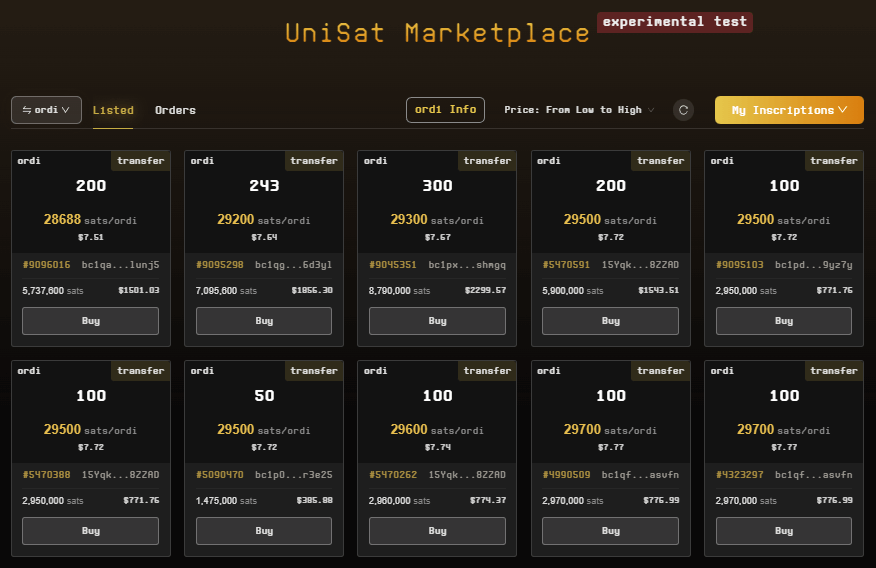
All these are open marketplaces for Ordinals. Here you can easily create your own Bitcoin NFT collections and start trading Bitcoin based BRC-20 tokens. Not only Bitcoin NFTs and fungible tokens on Bitcoin but you can also inscribe and acquire .sats names. This is similar to the .eth ENS (Ethereum Name Service). You can use your .sats name in Bitcoin explorers and Nostr. You can also use your .sats name as your public Bitcoin address and lightning address.
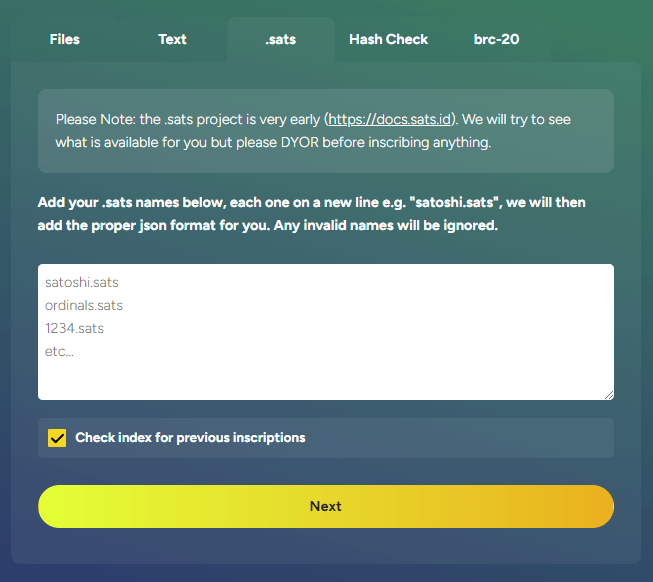
To learn more about Sats Names check out this documentation: https://docs.sats.id/sats-names/about
Some of the above listed services also features a block explorer that is fully compatible with the BRC-20 protocol. You can use the BRC20 ordinal explorer to search for BRC20 TX history and analyze the transfer function.
Exchange support
Currently there are not many centralized exchanges that has support for BRC-20 tokens. For now Crypto.com and Gate.io are the only two exchanges to allow trading of BRC-20 tokens. Also they only support the largest BRC-20 token by market cap i.e. ORDI.
You can deposit BRC20 $ORDI to these platform and start trading. However do note that BRC20 tokens should be deposited into your Taproot address (starting with “bclp”) and not your regular Bitcoin address. Transferring Bitcoin Ordinals, including BRC 20 tokens to your BTC address starting with “3” or legacy address “1” may not be recoverable.
That’s it! Hope this serves as an introductory guide to Bitcoin Ordinals and BRC-20 tokens. In our next guide we’ll provide complete instructions on how to setup wallet to mint Bitcoin NFTs and buy BRC-20 Tokens.
Please note that Ordinals and BRC 20 are an interesting experimental project. They are in early stages and has a bunch of flaws. Most of the projects have no actual use case and almost all of them are just worthless tokens and useless JPEGs. Do your own research and proceed with caution.

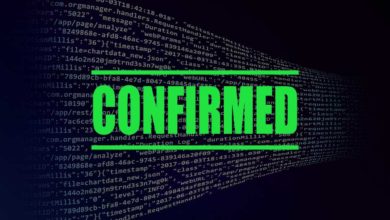
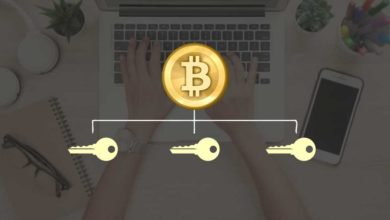
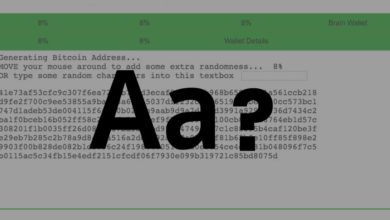
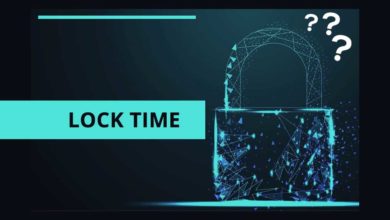
Discover the world of BRC-20 tokens and cryptocurrencies by joining HyperPay’s Twitter Space event, “BRC-20 Wealth Code: Forecast the future.” Engage in stimulating discussions, unlock the secrets of the BRC-20 wealth code, and stay updated on the latest BRC-20 technologies.
HyperPay stands out as the pioneering digital crypto wallet designed exclusively for BRC-20 tokens. It addresses the problem of high BTC gas fees by offering various cryptocurrency payment options such as USDT, ETH, and BTC. This allows for the convenient deployment of BRC-20 tokens using USDT.